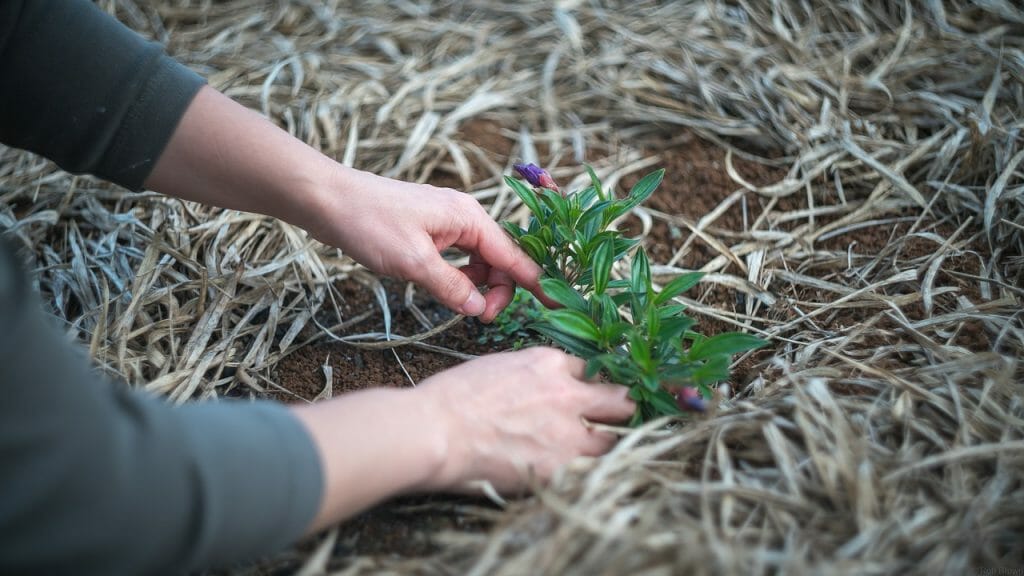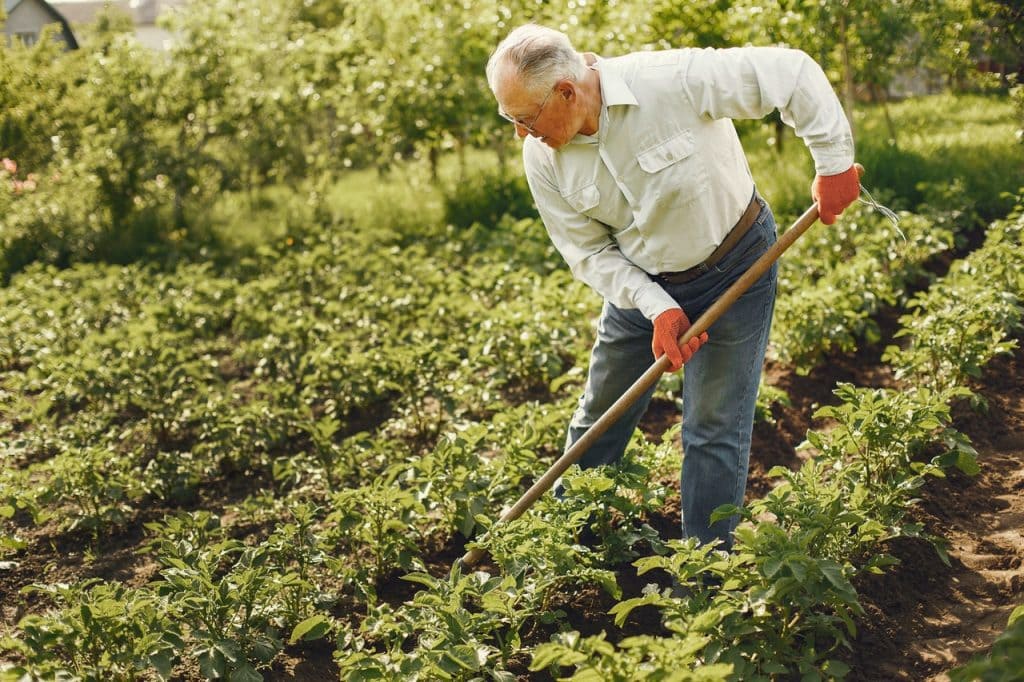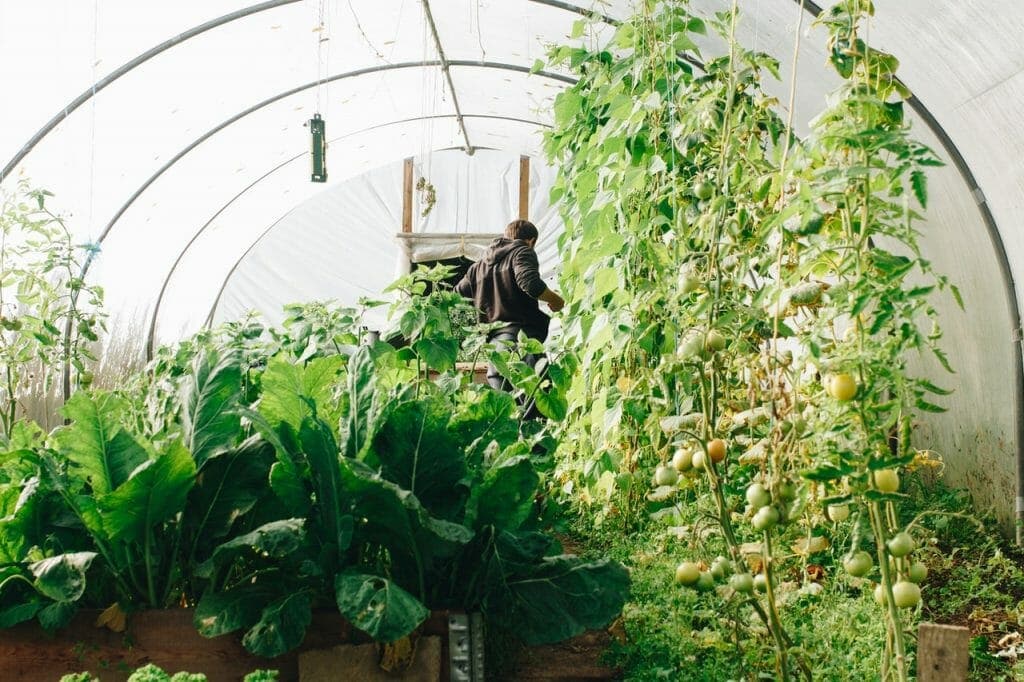Written by Magnolia Ricci and published on https://gardensimply.com/
Plants need good soil conditions if they are to give the best results. Improving the soil with plenty of organic matter in the form of compost helps drainage and aeration on heavy soils and conserves essential moisture on light ones.
On the veg patch or areas of bare soil, consider growing green manures – these are seedling crops that are dug back in to enrich the soil. Don’t dig soil for the sake of it. Once planted, the ground can be enriched by mulching and allowing worms to help incorporate it.
How To Enrich Poor Soil? – Expert Gardening Hacks
It isn’t difficult to build a new garden. Most people start by tilling their soil, digging up some dirt, and putting in a few plants. Then you can add compost or mulch your garden. Before you know it, you’re making good soil for your crops and vegetables. But the success of your garden depends on how healthy your garden soil is. A rule of thumb says having fertile soil means a productive garden. But if you don’t have one, we’re going to give you some tips on how to enrich poor soil. We’re also sharing how to identify the texture and type of soil, so read on and find out.
Identifying Soil Texture and Type
The composition of the soil can vary from small particles to gravely and coarse ground. You don’t need to be a scientist to assess the soil texture in your yard. Only put some soil in your palm and damp it gently, then pass the mixture through your fingertips. If it sounds dusty, your soil is sandy; if it feels soft, like damp talcum powder, your soil is silty; if it looks rough when it is warm, oily or slick when it’s dirty, or rubbery when it’s moist, it’s heavy in clay.
Soils are defined by the type of particle present in the soil: sand, silt, or clay. You can see what kind of soil you’re working with by conducting a basic soil check. With many different soil samples from your lawn and greenhouse, you may want to replicate the study.
- Fill a quarter jar with topsoil around one-third, then add water until the container is full.
- Screw onto the cap and firmly shake the mixture until all the dirt clumps have melted.
- Now put the container on a windowsill and watch as the larger particles start falling downwards.
- The sediment would have sunk to the bottom of the container within a minute or two. Label the sand amount on the side of the pot.
- Keep the bottle for many hours untouched. The smaller bits of silt settle slowly into the surface. You will note that the layers are slightly different colors, suggesting various particle forms.
- Use this glass overnight. The next layer would be mud, above the silt. Label the layer’s Thickness. A small layer of organic matter may rest on top of the soil. Any of the organic matter could still float in the atmosphere. The container would, in reality, be turbid and full of moving organic sediments.
How To Enrich Poor Soil
- Composting
Composting is a smart way to reduce waste from the garden. You can maximize the nutrients and enhance the quality of the soil through potato peels, fruit waste, plant clippings, and eggshells.
The equal volume of green and brown matter to get the correct quality compost is needed. Earthworms can support the other micro-organisms by aerating the soil and providing essential oxygen. In readiness for spring planting, change the soil with the compost can help plants grow. - Add manures
Animal manures may be useful supplements to soil — garden and plants for steep slopes are readily accessible for their nutrients. Manures potentially offer a more substantial contribution to soil than composts, which have already decomposed.
Don’t allow bad odor to screw up your nose. Believe it or not, it’s high in nitrogen, and that’s the perfect way to boost the soil over artificial fertilizers. Dog, pig, and sheep compost provides several other resources from herbivorous livestock waste. - Cover crops
If you do not choose manure for livestock, the cover crops are an alternative solution. The cover crops, also known as green manure, consist of plants plowed under and mulched back onto the soil to boost their productivity. Green manure is a sustainable farming activity accessible to gardeners.
Grasses of fast-growing grains (rye, oats, wheat, barley) are a strong option in early spring as cover crops.
Cold-hard legumes, such as peas, can start in late winter and develop for two months or longer to precede a heavy-food crop such as winter squash. You can use them as cover crops to fertilize garden beds and soils. - Wood Ash
If you have a fireplace, you may apply wood ash to the soil. Wood ash contains minerals, although it can also consume contaminants produced by the vegetation. Split the wood ash into tiny bits, and work or spray it in the garden.
Biochar is charcoal processed tends to retain minerals, plus you can remove contaminants from them. It is also considered carbon-negative. Do not add to charcoal briquettes to your garden from the barbecue. Any briquettes are made with potentially harmful additives.
Wood ash is also referred to as a low-grade fertilizer because of the tiny quantities of elements, but it performs very well with other additives. Ashes can boost acidic soil by growing the pH. - Fertilizer
The application of organic fertilizer is one of the easiest ways to increase the nutrient of the soil. You can achieve it by using goats, pigs, ducks, and horses’ feces as a natural fertilizer. Do not include carnivorous droppings. When you have applied it, blend it well in the dirt. If you spread it in the spring, make sure that you do it some weeks before you start planting.
Additional Tips: Air and Water
How To Enrich Poor Soil: Air
There is around 25 percent air in good soil. Microbes of insects, earthworms, and life in the soil need so much oxygen to survive. Soil is a major part of the natural nitrogen utilized by plants.
Well-aerated soil provides enough pore space between the particles in the soil. Large pieces of soil have tiny gaps between them to enter the air into the ground. Soil that has huge gaps, like sand, has pore spaces and a lot of air. Keep in mind that too much air will decompose organic matter too quickly.
How To Enrich Poor Soil: Water
There should still be around 25 percent water in good soil. Water, like air, is stored within soil particles in the pore spaces. Wide pore spaces enable water from rain and irrigation to travel down to the root and into the subsoil. The gaps between the sandy soils are so wide that gravity allows water to flow down quickly. So sandy fields dry out easily.
Ideally, the soil will have wide and small pore spaces together. Again, organic matter is the answer, as it promotes aggregation or soil-forming. The organic matter often collects and holds water until the plant roots need it. Know more about garden soils.
Conclusion
The key to a productive garden and healthy plants starts at ground level. There are several methods on how to enrich poor soil, but the goal of each technique is to minimize compaction, add organic matter to the soil, and to take advantage of the off-season. Following the steps provided in this article, be sure to get ready for the next harvest season.
Original post here https://gardensimply.com/how-to-enrich-poor-soil/.



